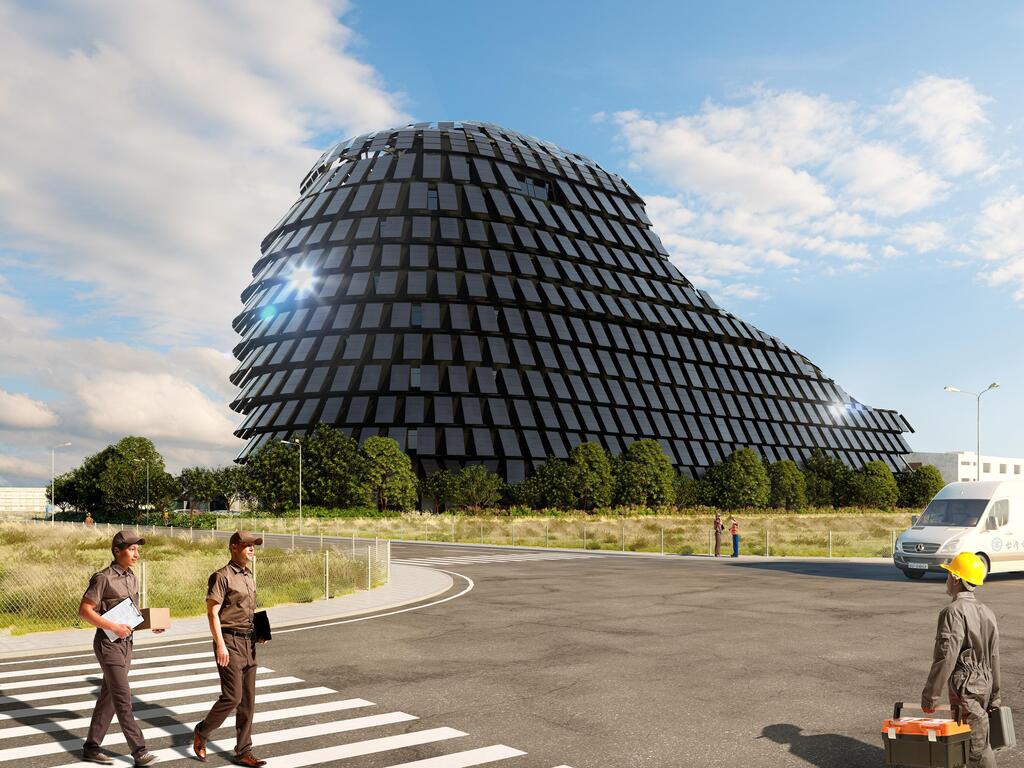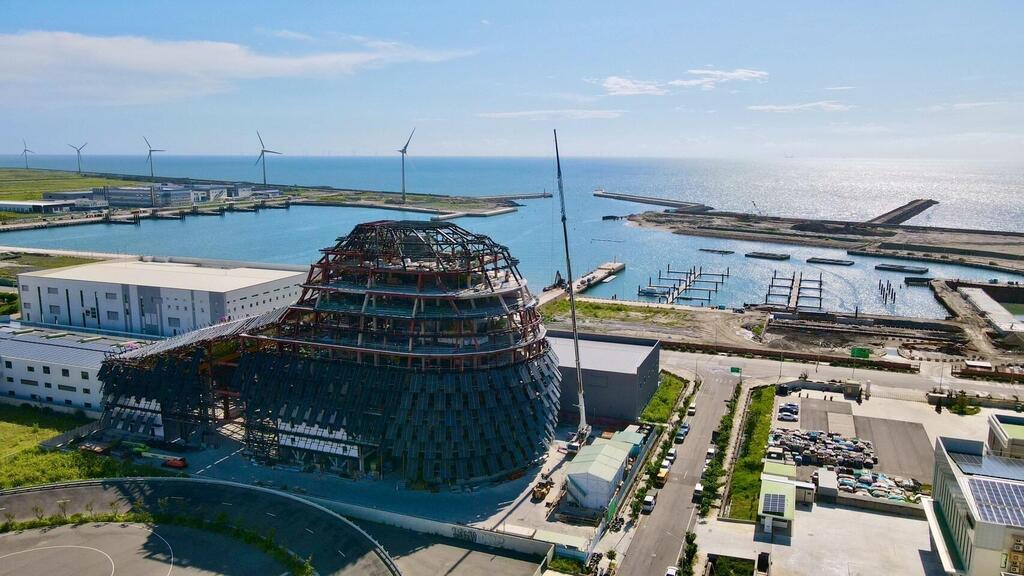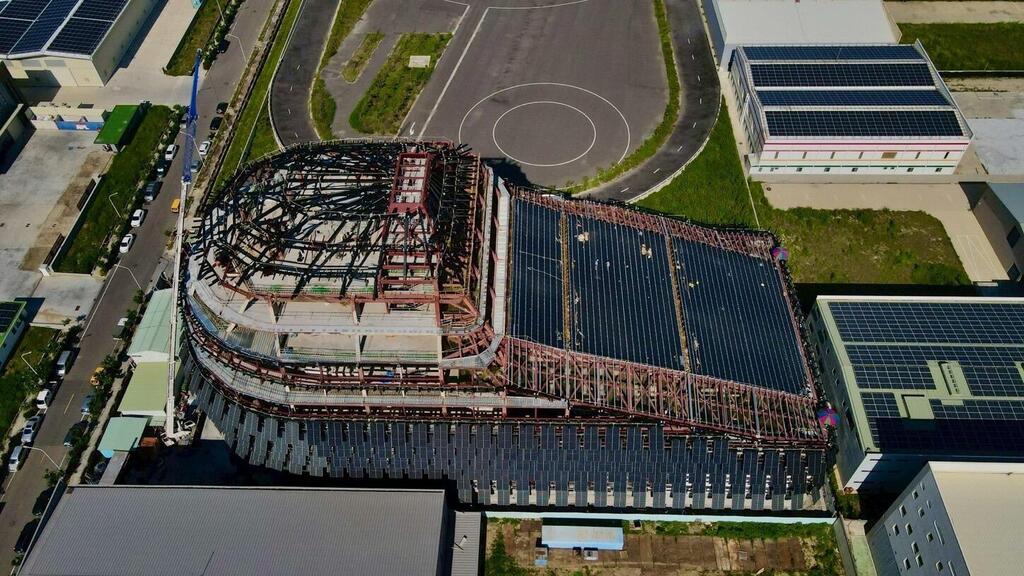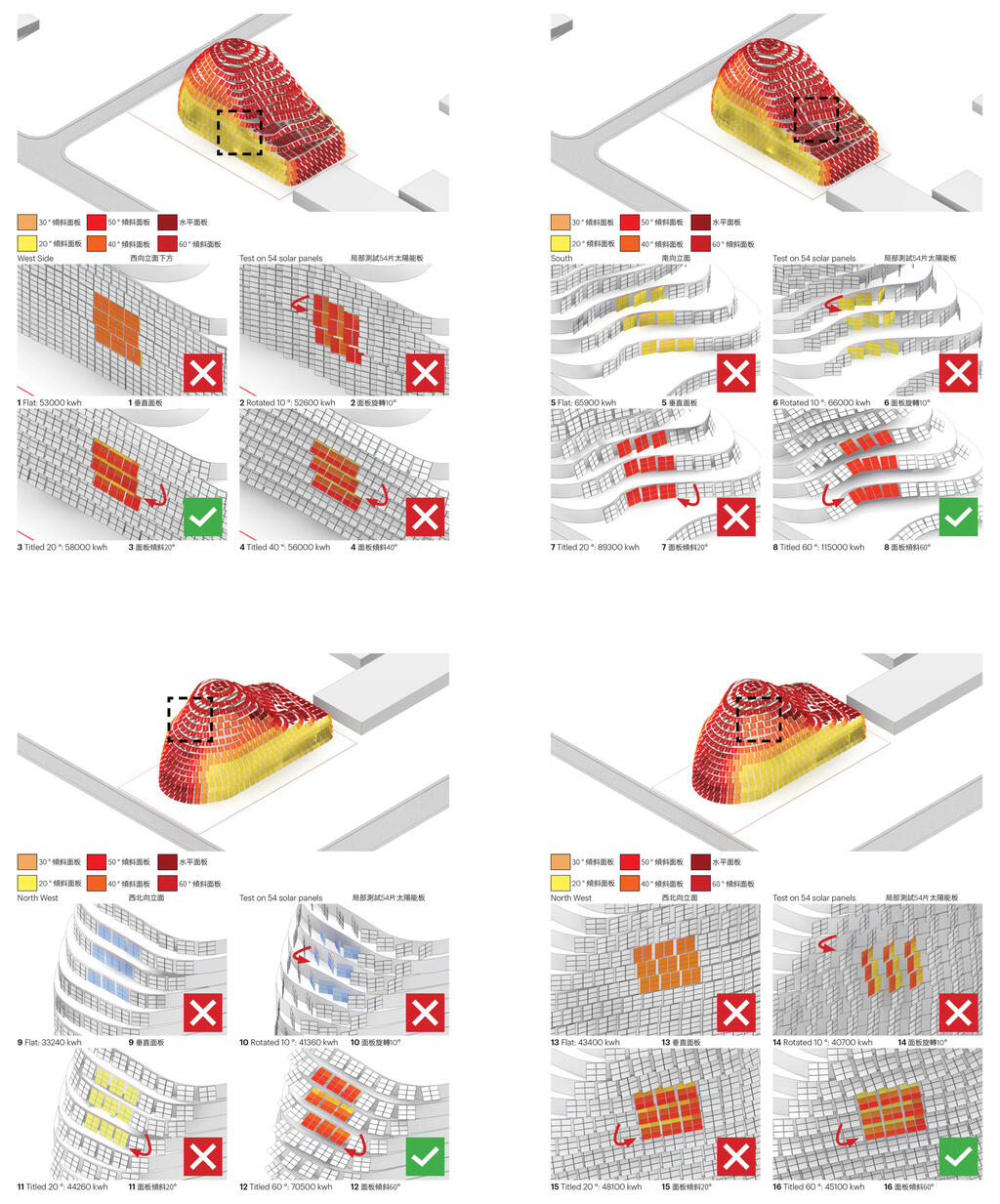Getting your Trinity Audio player ready...
Building facades are among the most prominent and impactful elements in architectural design—they’re the first thing the eye notices, and they set the tone for what’s inside. Sometimes they tell a story, sometimes they create a barrier, and sometimes they invite people in—but they always play a crucial role in shaping the urban and spatial experience.
But what if facades could do more than just look good? What if they could also serve a functional role and generate energy?
In recent years, more and more architectural projects have emerged where the facade—or parts of it—isn’t just a decorative shell but a smart, energy-producing system designed with solar movement, radiation angles, and the local climate in mind.
One of the most striking and ambitious projects in this field is currently under construction in Taiwan. The project is called Sun Rock, developed by Taiwan’s state-owned electricity company. Located in an industrial zone in Changhua, a city in western Taiwan that receives high sun exposure most of the year, the building will serve as an operational center for storing, maintaining, and managing equipment used for renewable energy production.
Beyond its functional role, however, Sun Rock is a bold architectural statement that aims to visually express Taiwan’s commitment to green energy. It’s not merely a building designed with sustainability principles in mind—it embodies sustainability as part of its visual and technological language. Once completed, it will be the first building in the world with an entirely solar-panel-covered facade—across all sides and surfaces. Not as a localized add-on, but as an all-encompassing, exclusive design feature that blurs the line between aesthetics, technology, and environmental performance.
Form meets function
The building’s spherical shape and folded facade aren’t just bold architectural choices—they’re the result of a meticulous design process based on solar radiation analysis, sunlight angles, and projected energy output throughout the day and across seasons. The southern sloped facade spans about 4,000 square meters of photovoltaic panels, tilted at optimal angles for noon sun exposure.
Meanwhile, the more convex northern side was specifically designed to efficiently capture morning and evening light. The entire surface is composed of angular folds, each angled differently to maximize energy yield from every exposed surface. The result: the building is expected to generate around 1.7 million kilowatt-hours of clean electricity annually—equivalent to burning 85 tons of crude oil. It will not only power itself entirely but also contribute surplus electricity to Taiwan’s national grid.
Design by MVRDV
The project was designed by Dutch architectural firm MVRDV, known for its innovative approach and boundary-pushing environmental, social, and aesthetic designs. With Sun Rock, the architects adopted a radical approach: transforming the entire facade into an energy-generating tool—not just a cladding element. Covering the entire building in solar panels was a bold decision that prioritized environmental function at the forefront of design. The building thus becomes not just an architectural marvel but a powerful visual statement of a future where buildings don’t just consume energy—they actively produce it.
Architect Winy Maas, co-founder of MVRDV and the project’s chief architect, explained: “We strive to make all our projects as sustainable as possible, but sometimes you can push further. In this case, since the client is an energy company, we had more freedom than usual. We covered the entire facade with photovoltaic panels so the building not only generates all the energy it needs—it also feeds into the local grid. We achieved this by precisely and data-drivenly placing each panel. It’s always fascinating to see what happens when energy analysis leads the design.”
A public renewable energy experience
In addition to its industrial and energy functions, Sun Rock is also designed to offer a public experience that connects visitors directly with the world of renewable energy. At the heart of the building is a dramatic central space called the “Data Room”—a high atrium where real-time data on the energy company’s operations and green energy output is displayed.
The ground floor features a gallery with a direct view into the building’s maintenance workshop, showcasing the technologies and infrastructure powering the energy revolution—from solar panels to wind turbine blades. The top floor hosts another exhibition gallery, while the rooftop, beneath a canopy of solar panels, is an open shaded terrace where employees and visitors can relax and experience the physical fusion of architecture, nature, and clean energy.
What about Israel?
While global architecture and technology advance, Israel is also recognizing the vast potential of integrating solar panels into buildings—especially in a country with abundant sunshine for most of the year.
Get the Ynetnews app on your smartphone: Google Play: https://bit.ly/4eJ37pE | Apple App Store: https://bit.ly/3ZL7iNv
In recent years, the Israeli government has set ambitious targets for renewable energy production: at least 10% of electricity by 2020, 20% by 2025, and 30% by 2030. In practice, the 2020 goal was only reached in 2022, when about 10.1% of national electricity consumption came from renewable sources. Of that, approximately 83% was generated by photovoltaic systems—mainly solar panels installed on rooftops, greenhouses, and parking lots—according to a 2023 Knesset Research and Information Center report.
Despite this progress, Israel still faces a significant gap in meeting its future goals. A nationwide initiative to integrate solar panels as a core part of architectural facades—similar to the Sun Rock model—could be a true leap forward. In a country with dense urban construction and a wide variety of suitable buildings, integrating solar systems can both reduce costs and cut air pollution. In this reality, the blend of aesthetics, energy efficiency, and smart design isn’t a luxury—it’s an urgent environmental and economic need.





